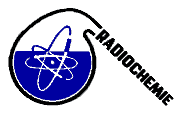Speaker
Dr
Raquel González de Orduña
(European Comision, Joint Research Centre, Institute for Reference Materials and Measurements)
Description
Three methods for reducing the background, and thus the detection limits for gamma spectrometry using HPGe-detectors are combined here.
1. A passive reduction of the background is achieved by using radiopure materials for the detector and its shield
2. An effective shielding from cosmic rays is achieved in the laboratory, which is located 225 m underground.
3. An active background reduction is achieved using pulse shape analysis.
Since the invention of the Ge-detectors in 1962 researchers have investigated ways of using the pulse shape for discriminating between pulses from various types of interactions in the Ge-crystal. The lack of success in this field has triggered developments of more complicated detector systems such as segmented crystals, pixels and strip detectors. When p-type point contact Ge-detectors with a shaped electric field (called BEGe-detectors, Broad Energy Germanium, by the company Canberra) started to appear on the market, the possibility opened for using solely the pulse shape of the one electrode for making analysis.
The drift of the electrons and holes towards the electrodes produce different pulse shape depending on how and where the energy of the photon was deposited in the crystal. When all the energy is deposited in one point, single-site event (SSE), the pulse shape has one peak, but when the energy is deposited is several points, a multiple-site event (MSE), the shape of the pulse present several peaks.
The work presented here aim at study and characterise the background and pulse-shape of two BEGe detectors with 19% and 50% relative efficiency by using a pulse shape discrimination technique. Since the signal of the read-out electrode depends on the size of the detector the discrimination level that can be achieved with each detector is different.
Primary author
Dr
Raquel González de Orduña
(European Comision, Joint Research Centre, Institute for Reference Materials and Measurements)
Co-authors
Dr
Dušan Budjáš
(Max-Planck-Insttut für kernphysik)
Dr
Erica Andreotti
(European Comision, Joint Research Centre, Institute for Reference Materials and Measurements)
Dr
Marcin Misiaszek
(M.Smoluchowski Institute of Physics, Jagiellonian University)
Dr
Mikael Hult
(European Comision, Joint Research Centre, Institute for Reference Materials and Measurements)

